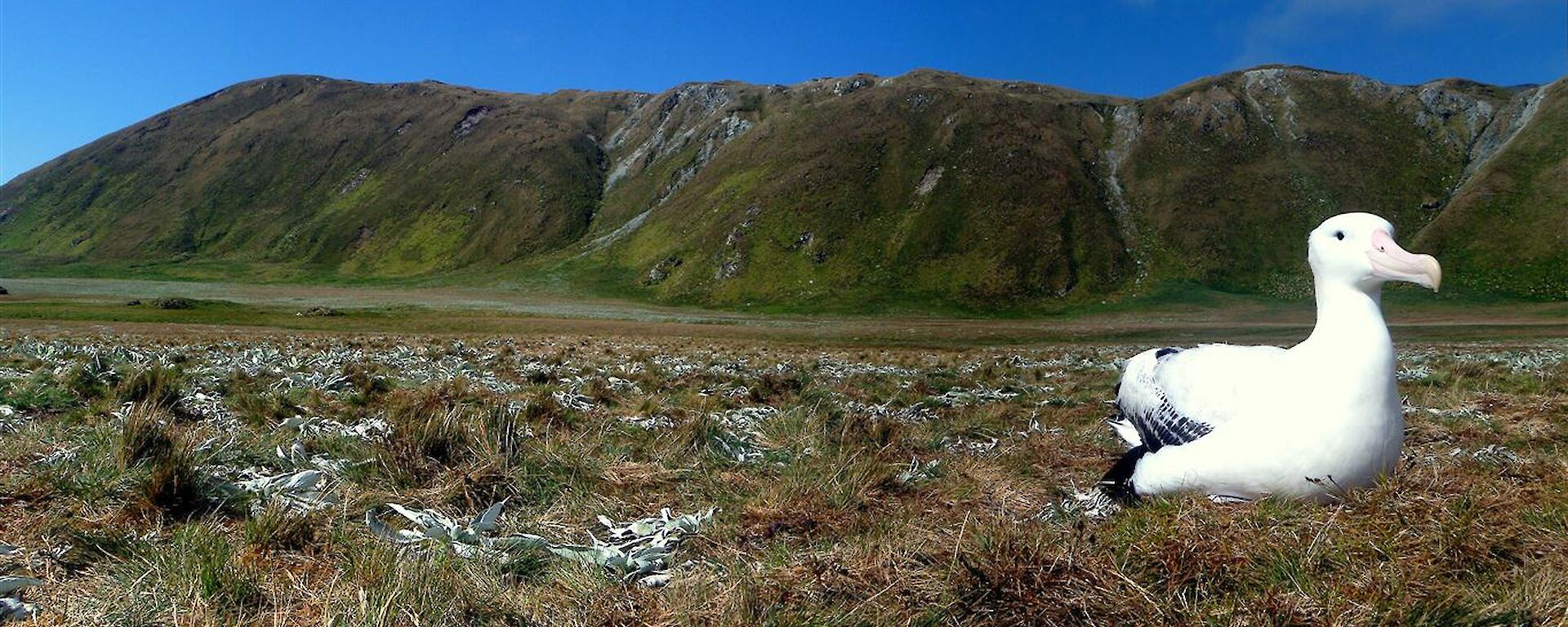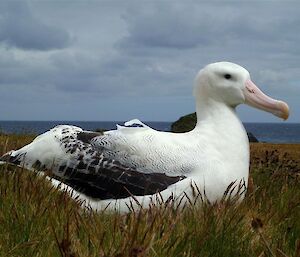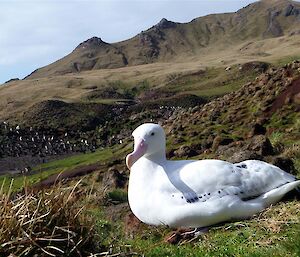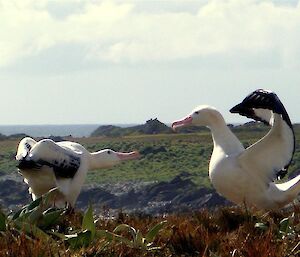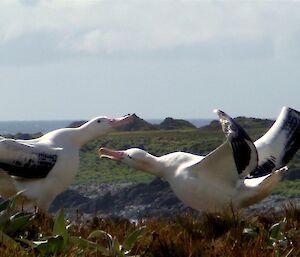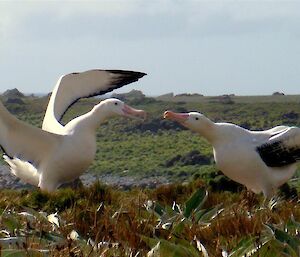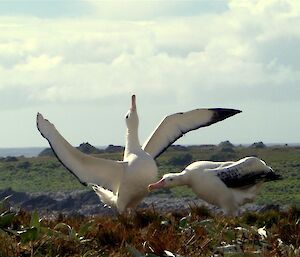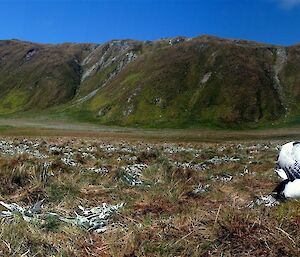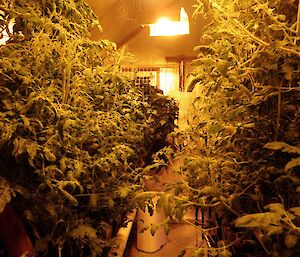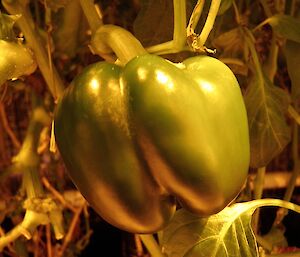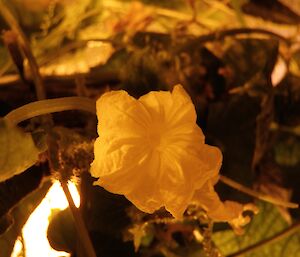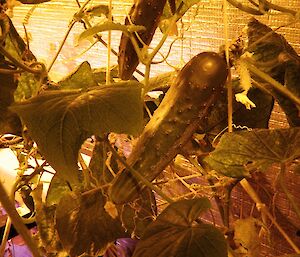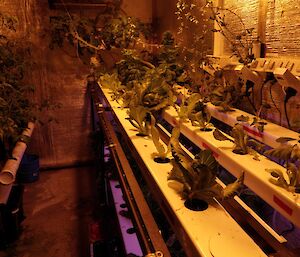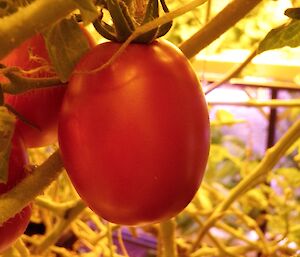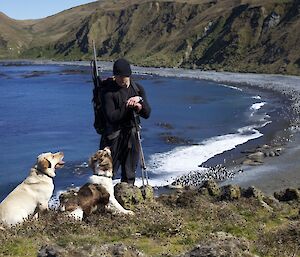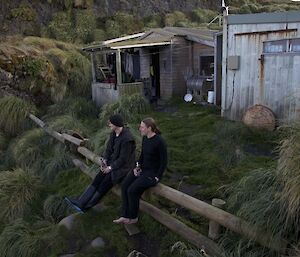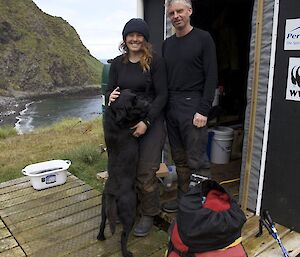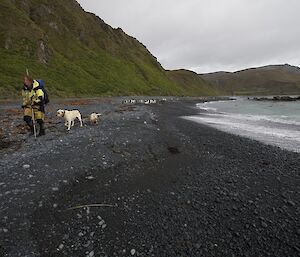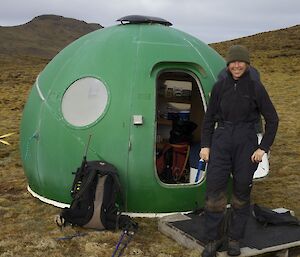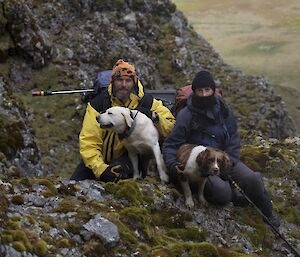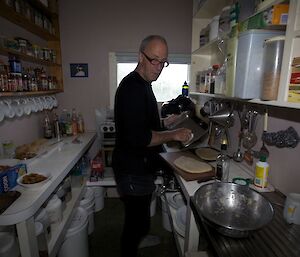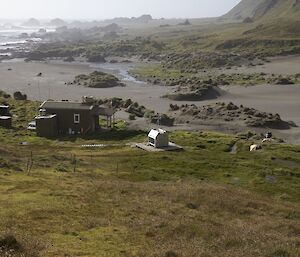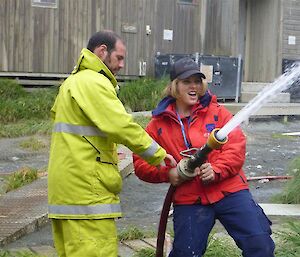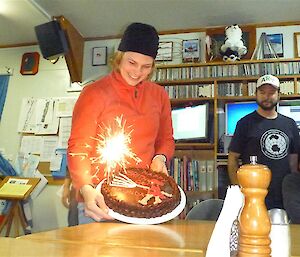Every year four to fifteen pairs of Wandering Albatross call Macquarie Island home. They reside mostly on the south-west part of the island.
Wandering Albatross will usually mate for life. Those males that have previously bred are the first to return to their nesting sites in late November. They develop what we call “sits” and then begin to construct a large nest bowl. During this period males spend a lot of time calling to attract a female or to notify their mate of their presence. When the females do arrive they bond with their partner through dances and vocalisations. The dance of the Wandering Albatross is a rare and cryptic performance; male and female communicate through head bobs, neck stretches and wing extensions. The correct sequence of dance moves and chattering identifies one’s partner, and breeding may continue.
Both adults work together to build a large nest, one metre wide and sixty centimetres high. One adult clips bits of vegetation and soil, and throws it over to the adult on the nest who does the construction work.
It is an exciting time on Macquarie Island as, right now, the females are laying their eggs and the males are diligently caring for them. The eggs weigh around 500g and are ten times bigger than that of a chook. It takes approximately eighty days for the egg to hatch. Adults have a unique bond with their egg and may neglect their own energy requirements to ensure the egg’s survival. One individual on Macquarie Island sat on an egg for 45 days without foraging, while waiting for its partner to return and swap incubation shifts.
While Wandering Albatross usually mate for life, if a pair has three consecutive failed attempts at breeding, divorce is on the cards and another partner sought out. However, some pairs are persistent. On Macquarie Island, a pair has had 10 consecutive breeding failures and is still returning each year to breed with each other.
Chicks remain on the nest for nine months. Once the chick fledges it spends the next four to seven years flying around the Southern Ocean, before returning to Macquarie Island. These years are extremely difficult for the young birds, as they learn how to survive and find predictable food resources. Young pairs that return to the island may practice for several years before they successfully produce a chick. Adult Wandering Albatross may live to over 50 years of age and breed into their late forties.
The Albatross researchers on Macquarie Island are hard at work monitoring each adult that returns to the island and paying close attention to their breeding habits. Banding data permits scientists to investigate the survival rates of this species. Biological samples provide insight into the mysterious life and diet of these birds while they are at sea.
So far this year 29 adults have been sighted at Macquarie Island and five eggs laid. Most importantly this work helps to predict the population trends and survival of the magnificent Macquarie Island Wandering Albatross.

